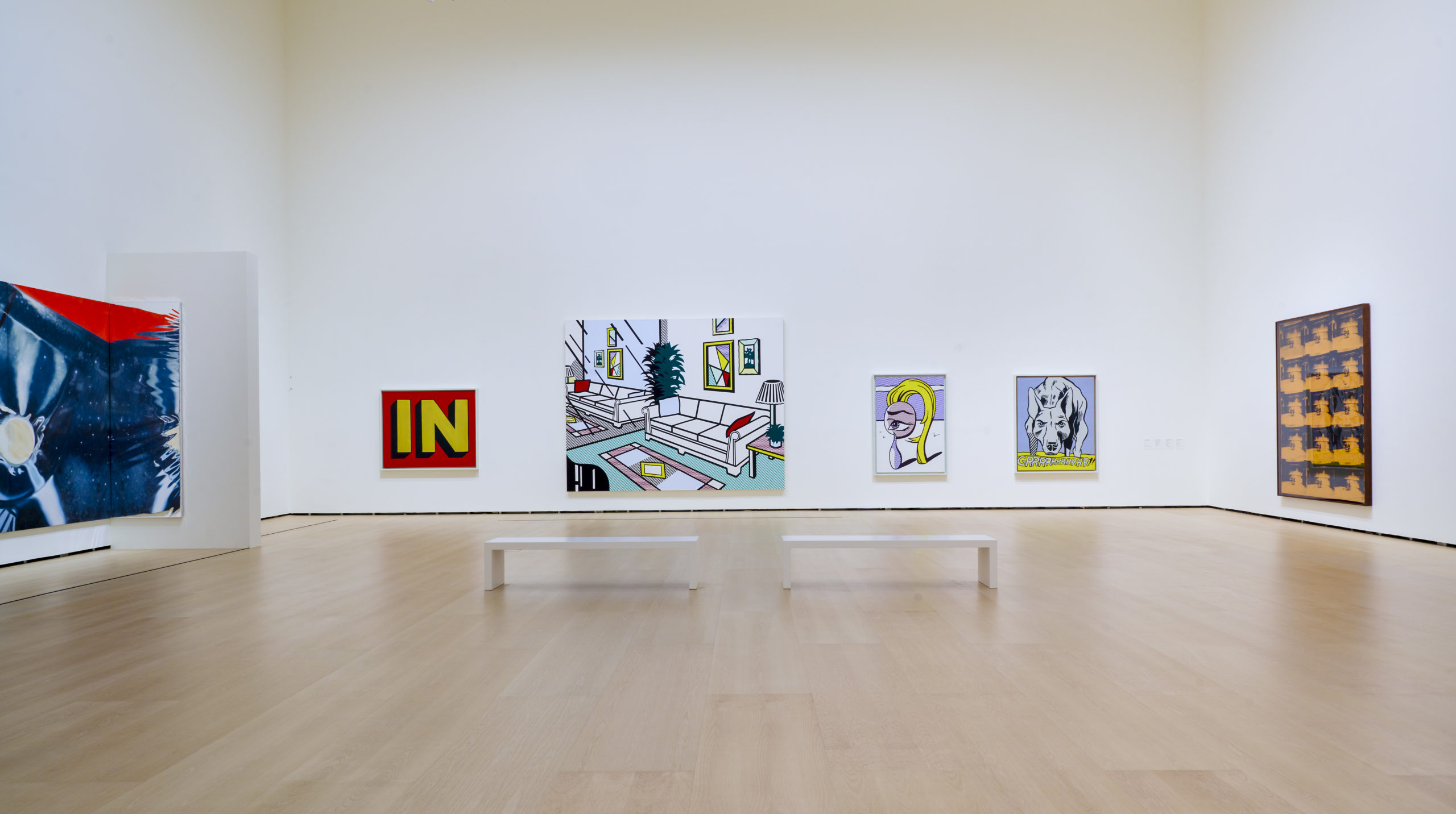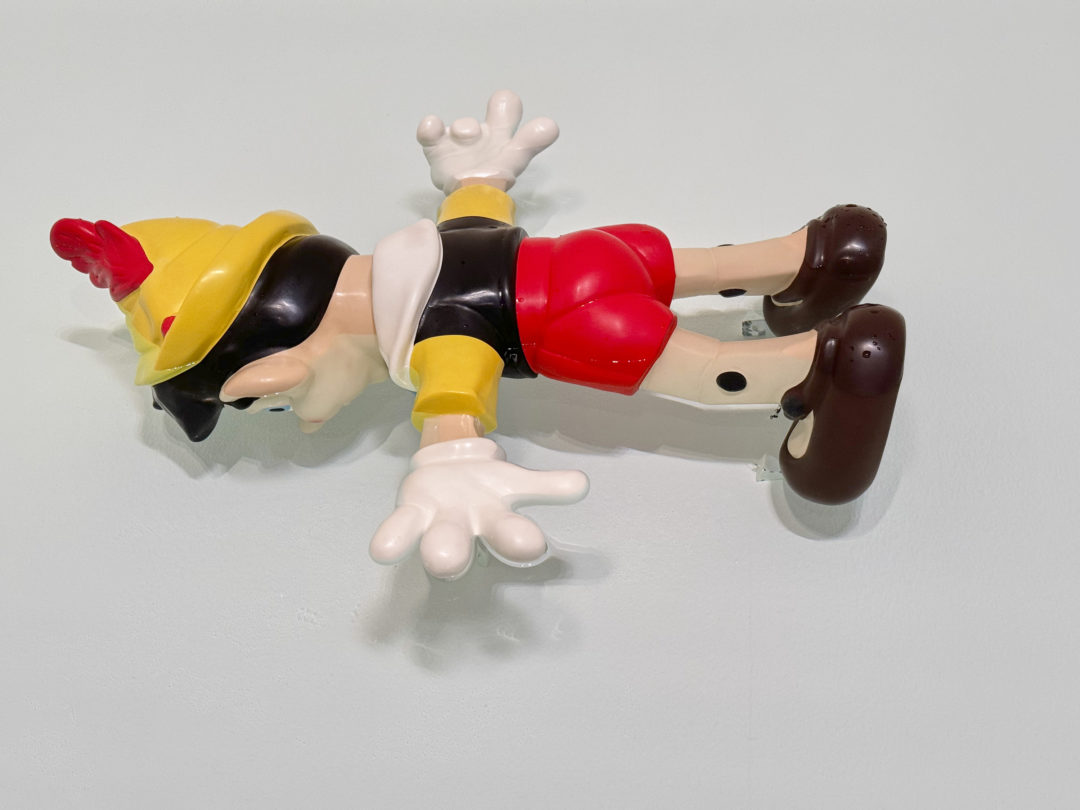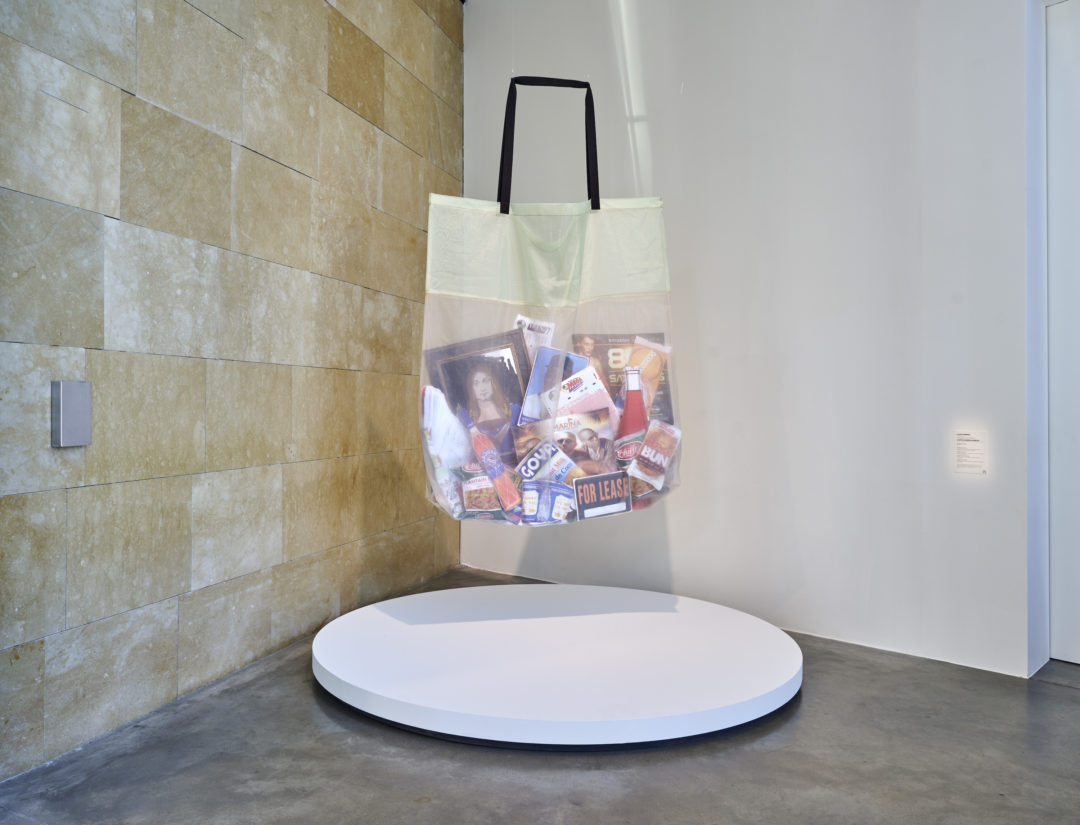Signs and Objects. Pop art from the Guggenheim Collection at Guggenheim Museum

“Signs and Objects. Pop art from the Guggenheim Collection”.
Guggenheim Museum, Bilbao.
16 February – 15 September 2024
On 16 February, the Guggenheim Museum Bilbao opened an exhibition dedicated to the great names of pop art and the artists it has inspired, including South American, French and Italian artists. In the adjoining hall, the Bilbao museum presented a retrospective of Giovanni Anselmo, one of the leading figures of Arte povera.
The Solomon R. Guggenheim Museum has always had a special relationship with Pop Art, and in 1963 it contributed to the movement’s consecration by organising a large-scale exhibition at its New York site, “Six Painters and the Object”, which it entrusted to one of the movement’s historic curators, Lawrence Alloway, the man who gave it its name. Sixty years on, it’s worth looking back at the importance of Pop Art and what it generated in terms of descendants, but also at what it pointed out about the artistic production of the time, particularly in terms of the new relationship with merchandise and consumption. At the end of the Second World War, the American art scene was largely dominated by the abstract expressionism of Jackson Pollock and Willem De Kooning: Richard Hamilton, Andy Warhol, Roy Lichtenstein, Claes Oldenburg and James Rosenquist formed the core of a new generation that was to shake up the art of the 1950s once and for all, and which the Guggenheim was able to collect from the outset.

Résine polyuréthane, peinture et acier / Polyurethane resin, paint, and steel,
Edition 1/1, 37.5 × 97.8 × 87.6 cm. Solomon R. Guggenheim Museum, New York,
Anonymous gift 2012.3 Photo : Kristopher McKay, Solomon R. Guggenheim Foundation,
New York. © Maurizio Cattelan.
“Signs and Objects. Pop art from the Guggenheim Collection” brings together major works from this movement that we are no longer used to seeing in catalogues, and we can only imagine how difficult it was to bring together in the same exhibition the canonical Grrrrrrrrr! (1965) by Roy Lichtenstein with James Rosenquist’s no less famous Flamingo Capsule (1970), Andy Warhol’s very rare Self-Portrait (1986) – which was probably his last self-portrait – with Robert Rauschenberg’s revolutionary pictorial experiments (Untitled, 1963) and Mimmo Rotella’s torn posters (Casablanca, 1980), or Claes Oldenburg’s ‘soft objects’ (Soft Pay-Telephone, 1963).
In passing, it is important to note that this movement, which is generally associated with American artists, originated in England, and is generally attributed to Richard Hamilton. Hamilton is of course represented in the Bilbao exhibition, with a work from 1965, The Solomon R. Guggenheim Museum (black and white), a work that stands somewhat apart in the Englishman’s output, and which probably shows a feeling of gratitude towards the Guggenheim, but also admiration for the museum’s architecture. The London-born artist’s work, like his celebrated Just what is it that makes today’s homes so different, so appealing? (1956), heralded a major shift in the art of the immediate post-war period. Hamilton’s works moved away from Expressionist painting and its romantic flights of fancy towards an everyday life pre-empted by representations of an increasingly prevalent commodity. Pop art never ceased to question this relationship with the object, which it invested in every way, from the most spectacular adulation – such as that of Claes Oldenburg, whose stretchism can be seen as a form of celebration, and to whom the museum has dedicated a specific space to display his monumental Soft Shuttlecock – to the final overdose of Warhol, whose endless Campbell’s soup cans and Disasters series can be seen as the logical outcome of this consumerist tropism.
Lichtenstein’s Girls with Tears (1987), rightly included in this collection of fabulous masterpieces, shows just how much the American painter owes to the legacy of his predecessors – in particular Magritte, whose art of transparency and illusion it sublimely echoes. The second part of the exhibition, moreover, gives pride of place to the influences of a Pop Art reviving the critical and ironic vision of the European avant-gardes – particularly Dadaism – that the great American art of the immediate post-war period had largely eclipsed. Rauschenberg’s cardboard assemblages (Cardbord, 1971) and Jim Dine’s pictorial deconstruction of the same period (Pearls, 1961) show how far we have come towards the artistic earthquake that was Pop Art, the replicas of which continue to spread through recent works, Like Josephine Meckseper’s African Spir (2011) or Douglas Gordon’s reworking of Warhol’s famous Empire (Bootleg (Empire) (1998)). Does Maurizio Cattelan’s Daddy, Daddy (2008), which was donated to the Guggenheim in 2012, signal the end of this prolific progeny of pop art and its homage to popular culture, or is it simply a final thumbing of the Milanese’s nose at everything that, for him, could be construed as suspicious idolatry?
The exhibition seems to respond indirectly to the Italian, showing that pop art continues to inspire many contemporary artists who have managed to update the ironic vision of pop art, by attacking icons of the establishment, as in the case of the Mexican José Davila with Donald Judd’s celebrated stacking, which he reworks in its perishable cardboard version (Untitled, 2017), or the work of Lucia Hierro and Lucia Guzman Garcia, which revisits the founding themes of pop art and its unwavering interest in the mass-market object, but in a much trashier version, very literally, since it is now a question of getting rid of all those objects that clutter up our lives and end up in our dustbins (De Todo un Poco, 2017-2021).

Organdi de polyester, feutre et impressions à jet d’encre sur daim
brossé et nylon brossé / Polyester organdy, felt, and inkjet prints on
brushed suede and brushed nylon, 152.4 × 170.18 cm. Solomon R.
Guggenheim Museum, New York, Purchased with funds contributed
by the Latin American Circle 2021.35. Photo : Midge Wattles,
Solomon R. Guggenheim Museum, New York.
© Lucia Hierro, Biblao, 2024.
______________________________________________________________________________
Head image : Vue de l’exposition / exhibition view of « Signes et objets. Pop art de la Collection Guggenheim ». © Guggenheim Bilbao Museoa.
- From the issue: 108
- Share: ,
- By the same author: Don't Take It Too Seriously, Hilma af Klint, Playground, Lyon Biennial, Anozero' 24, Coimbra Biennal,
Related articles
Streaming from our eyes
by Gabriela Anco
Don’t Take It Too Seriously
by Patrice Joly
Déborah Bron & Camille Sevez
by Gabriela Anco

